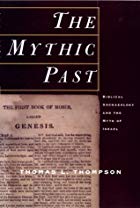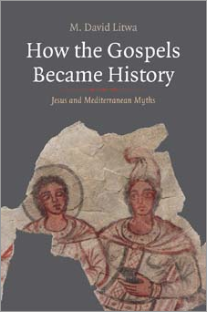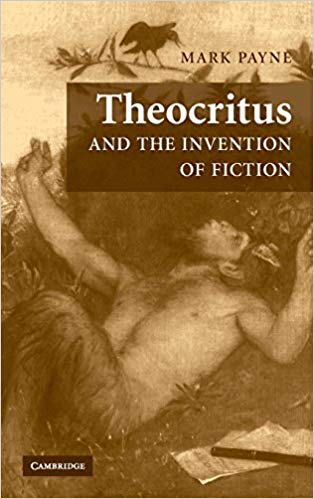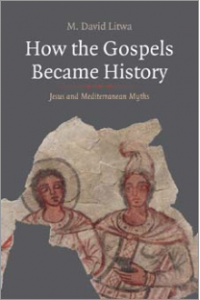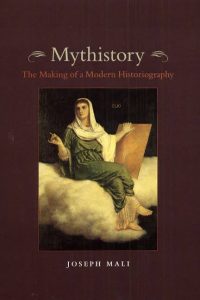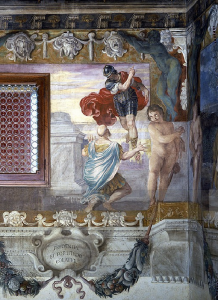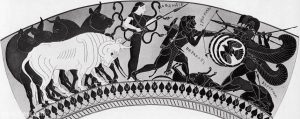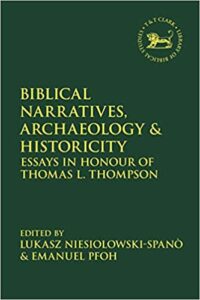 My original plan for a single post has now stretched out into four. Time to wrap up with Russell Gmirkin’s explanation for the relationship between the Solomon narrative and Assyrian records of Shalmaneser’s ninth century conquests and subsequent (eighth century) Assyrian building accounts.
My original plan for a single post has now stretched out into four. Time to wrap up with Russell Gmirkin’s explanation for the relationship between the Solomon narrative and Assyrian records of Shalmaneser’s ninth century conquests and subsequent (eighth century) Assyrian building accounts.
The close correspondence between Sennacherib’s building account of Solomon’s temple and palace suggests that the biblical authors were not only broadly familiar with the literary conventions of Mesopotamian building accounts but had actually read the cuneiform inscriptions at Sennacherib’s Palace Without Rival. One may posit Assyrian authorship of the building account in Kings by educated Assyrian or Babylonian scribes from Samerina who travelled back to Nineveh for the international celebrations associated with the Palace Without Rival (LAR, II, §§367, 394, 413, 424; cf. Russell 1991: 260-2).
(Gmirkin, 86)
The Method Behind the “Narcissistic Madness” of Kings
Through citations of primary and secondary sources Gmirkin directs readers to an explanation of the political propaganda functions of the Assyrian monuments with their boasting inscriptions, unparalleled architecture and grandiose sculptures. Sennacherib made it clear that the “glory” he displayed in his monumental works were meant to be seen by people coming from all parts of his empire:
367: Great slabs of limestone, the enemy tribes, whom my hands had conquered, dragged through them (the doors), and I had them set up around their walls,— I made them objects of astonishment.
394: Those palaces, all around the (large) palace, I beautified; to the astonishment of all nations I raised aloft its head. The “Palace without a Rival,” I called its name.
413: I placed pillars of maple, cypress, cedar, dupranu-wood, pine and sindu-wood, with inlay of pasalli and silver, and set them up as columns in the rooms of my royal abode. Slabs of breccia and alabaster, and great slabs of limestone, I placed around their walls; I made them wonderful to behold. That daily there might be an abundant flow of water of the buckets, I had copper cables(?) and pails made and in place of the (mud-brick) pedestals (pillars) I set up great posts and crossbeams over the wells. Those palaces, all around the (large) palace, I beautified; to the astonishment of all nations, I raised aloft its head. The “Palace without a Rival” I called its name.
424: 1. At that time, after I had completed the palace in the midst of the city of Nineveh for my royal residence, had filled it with gorgeous furnishings, to the astonishment of all the people . . . .
John Russell in Sennacherib’s Palace Without Rival explains:
A magnificent capital closely identified with the ruling monarch can, however, be a very useful tool for maintaining an empire. Subject peoples visiting the capital would have been greatly awed by the power implied by the sheer bulk and splendor of the monuments of Nineveh, thus reinforcing their inclination to submit rather than to rebeL The construction of the new capital, then, was not a simple matter of royal vanity, but was instead an integral part of Sennacherib’s imperial policy. In the course of his reign, Sennacherib made Nineveh the center of the world . . . .
The key to understanding these images [the palace sculptures] would seem to be not in their subject matter, but rather in their audience and function. The reliefs in the more public areas of Sennacherib’s palace, such as the outer court and throne room, seem to be directed more to outsiders than insiders, and their predominant message is one of warning rather than affirmation. One of their principal functions is apparently to insure the stability of the borders of the empire through the threat of violence expressed in graphic and easily perceptible terms. The ideal of maintaining the flow of tribute from the edges of the empire to its center has not changed, but the reliefs now take a more active part in this process. Rather than presenting visitors to the more public spaces with passive images showing universal submission as a fait accompli, Sennacherib’s reliefs sharply confront them with the consequences of rebellion.
In the more private inner parts of the palace, by contrast, Sennacherib’s reliefs balance these images of conquest at the periphery with images of construction in the center, emphasizing for insiders not only the risks involved in rebellion but the benefits of good government as well. Thus, for audiences both outside and inside the palace circle Sennacherib transformed the role of palace reliefs from affirmations of universal rule into tools to help maintain that rule.
(Russell, 261 f)
Ahab’s Eclipse
I highlighted the words “The ideal of maintaining the flow of tribute from the edges of the empire to its center” because that ideal, Russell explains, had been the theme of Sennacherib’s father who depicted scenes of long lines of tribute bearers in preference to cruel images of the fate of rebels. We are reminded of the ideal utopian scenes of “happy subjects” submitting to Solomon. So much for fleshing out Russell Gmirkin’s citations. Back to his main argument (and one may want to recall the first post in this series for the Ahab context):
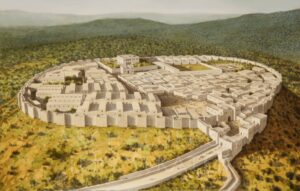
Although the Acts of Solomon credited Shalmaneser III with a building program of ancient monumental architecture that included chariot cities at Gezer, Megiddo and Hazor, and Jerusalem’s temple and palace, these fortresses and impressive buildings of an earlier era are best understood as historically having been constructed by Ahab of Israel. Archaeological evidence pointing to correlations between the temple building account and temple architecture of the tenth to eighth centuries BCE in the southern Levant fully supports the construction of Jerusalem’s temple by Ahab rather than a construction by a local king of Judah (much less Solomon). The attribution of Jerusalem’s temple and other ancient monumental constructions in the southern Levant to the legendary ruler Shalmaneser III (Solomon) was an expression of local patriotic pride among the Mesopotamian (Assyrian and Babylonian) ruling class of Neo-Assyrian Samerina [the Assyrian name for the province dominated by Samaria].
(Gmirkin, 86)
Here Come the Mesopotamians – and They Don’t Mix
According to Gmirkin, then,
— the Assyrian conquerors deported the local elites from the northern kingdom of Israel
— and replaced them with Assyrian and Babylonian officials and colonists who became the “new educated ruling class elites”.
Did not those Mesopotamians eventually lose their identity by merging with the local population? That’s a common view but Gmirkin refers to Mladen Popović’s chapter, “Networks of Scholars: The Transmission of Astronomical and Astrological Learning between Babylonians, Greeks and Jews” who appeals to network theory to dispute the popular notion. When we follow up that chapter we find that Popović presents evidence that the Babylonian elites maintained a strong identity that stood opposed to “popular” culture:
Babylonians and non-Assyrians engaged in royal scholarly networks. The late Assyrian empire had become bilingual and bicultural, with Aramaic becoming the international vernacular. At the same time, there is evidence for adversarial reactions among the Assyrian ruling classes to the rising importance of Aramaic. For example, to a request by the scribe Sin-iddina of Ur to reply in Aramaic, the king answers that the scribe should rather write to him in Akkadian. This example works both ways. On the one hand, it shows that ethno-linguistic boundaries were not strict: letters to the Assyrian king could be written in Aramaic. On the other hand, it demonstrates that such boundaries were not completely ephemeral. The sender of the letter may have asked for too much by requesting the king’s answer also be in Aramaic. The king retorts by raising the boundary and emphasizing its importance: he creates an ethno-linguistic sense of difference between the scribe and himself. While ethno-linguistic and cultural boundaries can be crossed, they are also maintained. However, in the Neo-Assyrian period such boundaries do not seem to have prohibited the accessibility and dissemination of Babylonian science.
If we look at evidence from the Neo- and Late-Babylonian periods, it seems that the Babylonian urban elite had stricter limitations for entry into the scholarly elite than the Assyrians. . . . .
Through cuneiform culture the Babylonian urban elite is said to have expressed a high degree of self-consciousness. For example, a cuneiform text from Hellenistic Uruk shows that the Aramaeans were still considered a separate ethno-linguistic group by some Babylonians; the reference in the late Seleucid list from Uruk of kings and scholars to Esarhaddon’s counsellor Aba-Enlil-dari as the one “whom the Aramaeans call Aḫuqar” shows that the story of Aḫiqar was known but seen as part of “popular” Aramaic culture rather than cuneiform elite culture. The impression gained from cuneiform sources is of Late Babylonia as an imagined community of urban elites who retreated into the imaginary space provided by the temples and the schools, with cuneiform itself being the main distinguishing characteristic of this community. The Babylonian urban elites constructed a cultural identity for themselves, one that became more and more detached from the ethno-linguistic, cultural and political realities of Babylonia in the Hellenistic and Parthian periods. At the same time, evidence from Hellenistic Uruk seems to indicate that they cultivated strong ties with the Greek elite and the Seleucid rulers that ensured their small community thrived. This shows that despite a cultivated identity that seems detached from real life, Babylonian urban elites were also able to relate to changing ethno-linguistic, cultural and political realities and to do so to their own advantage.
(Popović, 170 f)
In the context of Gmirkin’s views, that statement about the Babylonian elites finding common ground with the other elitist Greek arrivals is of interest.
Popović regularly cites “Network Theory and Religious Innovation” by Anna Collar who emphasizes that
most social ties are ‘strong’, reflective of fundamental facets of identity. Social identity can be defined (somewhat simplistically) by group membership.
(Collar, 151)
Hence Gmirkin has justification for his view: Continue reading “How the Story of Solomon Emerged from Assyrian and Babylonian Elites — part 4”

